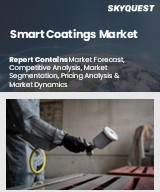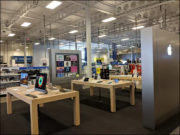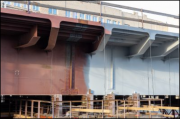
|
시장보고서
상품코드
1722920
세계의 스마트 코팅 시장 규모, 점유율, 동향, 예측 : 레이어 유형, 기능, 최종 이용 산업, 지역별(2025-2033년)Smart Coatings Market Size, Share, Trends and Forecast by Layer Type, Function, End Use Industry, and Region, 2025-2033 |
||||||
스마트 코팅 세계 시장 규모는 2024년에 31억 9,000만 달러에 달했습니다. 향후 IMARC Group은 2033년까지 시장 규모가 133억 1,000만 달러에 달하고, 2025-2033년 16.34%의 연평균 복합 성장률(CAGR)을 보일 것으로 예측했습니다. 현재 아시아태평양이 시장을 독점하고 있으며, 2024년에는 36.5%의 높은 시장 점유율을 차지했습니다. 각 산업 분야에서 내식성 코팅에 대한 수요 증가와 친환경 코팅을 선호하는 환경 인식이 높아지면서 시장 성장을 견인하고 있습니다. 이 외에도 항균 코팅에 초점을 맞춘 헬스케어 분야의 확대와 혁신 기술 연구개발(R&D)에 대한 투자 확대도 스마트 코팅 시장 점유율을 견인하고 있습니다.
스마트 코팅은 다양한 산업 분야에서 다각적인 이점을 제공하도록 설계된 재료 과학의 최첨단 혁신입니다. 환경 변화 및 외부 자극에 적응하고 스마트하게 반응하도록 설계되었습니다. 자동차 및 항공우주 분야의 부식 방지, 건축 표면의 셀프 클리닝 특성, 의료기기의 항균 코팅과 같은 헬스케어 분야에도 널리 사용되고 있습니다. 경미한 손상은 스스로 치유하기 때문에 내구성이 향상되고, 유지보수 비용을 절감할 수 있습니다. 또한, 셀프 클리닝 기능을 통해 화학 세정제의 필요성을 줄여 친환경적인 제품입니다. 자동차 산업에서 스마트 코팅은 온도 변화와 빛에 반응하여 색상과 투명도를 변화시켜 자동차의 미관과 안전성을 향상시킵니다. 스마트 코팅에는 자기복원성 코팅, 광변색 코팅, 소수성 코팅 등 다양한 유형이 있으며, 각각 특정 용도에 맞게 조정되어 있습니다.
스마트 코팅 세계 시장은 자동차, 항공우주, 건축 등의 산업에서 내식성 코팅에 대한 수요가 증가함에 따라 영향을 받고 있습니다. 또한, 환경 문제에 대한 인식이 높아지면서 셀프 클리닝 및 방오 코팅의 채택이 급증하고 있습니다. 또한, 헬스케어 분야의 확대는 의료기기 및 표면용 항균 코팅에 대한 수요를 증가시켜 시장 성장을 더욱 촉진하고 있습니다. 또한, 사물인터넷(IoT)의 부상으로 센서 및 전자기기용 스마트 코팅에 대한 관심이 높아지면서 시장을 더욱 촉진하고 있습니다. 이에 따라 자동차 산업에서는 코팅을 통한 에너지 효율성 추구와 미관 개선이 시장 확대에 기여하고 있습니다. 또한, 스마트 코팅이 건물 및 인프라의 에너지 효율을 높이는 역할을 하는 것도 시장 성장을 가속하고 있습니다.
스마트 코팅 시장 동향과 촉진요인:
내식성 코팅에 대한 수요 증가
세계 스마트 코팅 시장은 내식성 코팅에 대한 수요 증가로 인해 눈에 띄는 상승세를 보이고 있습니다. 자동차, 항공우주, 건설 등의 산업은 자산을 부식 및 열화로부터 보호하기 위해 코팅에 크게 의존하고 있습니다. 스마트 코팅은 실시간 부식 모니터링과 자가 치유 특성을 제공하는 능력으로 각광을 받고 있습니다. 예를 들어, 자동차 분야에서 스마트 코팅은 자동차의 수명을 연장하고 유지보수 비용을 절감하기 위해 채택되고 있습니다. 가혹한 환경 조건이 문제가 되는 항공우주 분야에서는 스마트 코팅이 중요한 부품을 보호하는 데 중요한 역할을 하고 있습니다. 건설 산업에서는 스마트 코팅의 긴 수명과 풍화로부터 인프라를 보호할 수 있는 능력이 도움이 됩니다. 내식성 스마트 코팅에 대한 수요가 급증하면서 다양한 분야에서 자산의 내구성과 비용 효율성을 보장하는 스마트 코팅의 중요성이 강조되고 있습니다.
환경문제에 대한 인식 제고
스마트 코팅 시장의 경우, 전 세계적으로 환경에 대한 인식의 전환이 중요한 촉진요인으로 작용하고 있습니다. 스마트 코팅은 잦은 재도장 및 유지보수의 필요성을 줄임으로써 환경 친화적인 솔루션을 제공합니다. 예를 들어, 셀프 클리닝 코팅은 표면이 먼지와 오염 물질을 튕겨내어 더 깨끗한 환경과 세척제 사용을 줄일 수 있습니다. 방오 코팅은 선박에 해양 생물이 축적되는 것을 방지하고 독성 방오제가 수생 생태계로 방출되는 것을 줄입니다. 또한, 스마트 코팅을 채택함으로써 태양전지판과 창문의 효율을 유지하여 에너지 절약에 기여할 수 있습니다. 전 세계적으로 지속가능성이 중요시되는 가운데, 친환경 스마트 코팅에 대한 수요는 산업계 전반에서 지속적으로 증가할 것으로 예상되며, 시장 성장의 중요한 요인으로 작용할 것으로 보입니다.
헬스케어 분야 확대
헬스케어 분야의 확대는 세계 스마트 코팅 시장의 매우 중요한 촉진요인이며, 특히 항균 코팅의 채택이 두드러집니다. 항균 코팅은 의료기기 및 병원 인프라를 포함한 표면의 박테리아 및 병원균의 증식을 억제하도록 설계되었습니다. 의료 관련 감염에 대한 우려가 높아지는 가운데 항균 스마트 코팅은 감염 제어에 대한 적극적인 접근 방식을 제공합니다. 위생적인 환경을 유지하고 2차 오염의 위험을 줄입니다. 헬스케어 산업의 지속적인 성장으로 항균 스마트 코팅에 대한 수요가 증가하고 있습니다. 이러한 촉진요인은 환자의 안전을 향상시킬 뿐만 아니라 의료 시설의 고유한 요구를 충족시키려는 스마트 코팅 제조업체에게 큰 시장 기회가 되고 있습니다.
목차
제1장 서문
제2장 조사 범위와 조사 방법
- 조사 목적
- 이해관계자
- 데이터 소스
- 1차 정보
- 2차 정보
- 시장 추정
- 보텀업 접근
- 톱다운 접근
- 조사 방법
제3장 주요 요약
제4장 서론
- 개요
- 주요 업계 동향
제5장 세계의 스마트 코팅 시장
- 시장 개요
- 시장 실적
- COVID-19의 영향
- 시장 예측
제6장 시장 분석 : 레이어 유형별
- Single-Layer
- Multi-Layer
제7장 시장 분석 : 기능별
- 항균
- 내부식성
- 방오
- 방빙
- 셀프 클리닝
- 자기치유
- 기타
제8장 시장 분석 : 최종 이용 산업별
- 건축 및 건설
- 자동차
- 해양
- 항공우주 및 방위
- 기타
제9장 시장 분석 : 지역별
- 북미
- 미국
- 캐나다
- 아시아태평양
- 중국
- 일본
- 인도
- 한국
- 호주
- 인도네시아
- 기타
- 유럽
- 독일
- 프랑스
- 영국
- 이탈리아
- 스페인
- 러시아
- 기타
- 라틴아메리카
- 브라질
- 멕시코
- 기타
- 중동 및 아프리카
- 시장 내역 : 국가별
제10장 SWOT 분석
- 개요
- 강점
- 약점
- 기회
- 위협
제11장 밸류체인 분석
제12장 Porter의 Five Forces 분석
- 개요
- 바이어의 교섭력
- 공급 기업의 교섭력
- 경쟁 정도
- 신규 진출업체의 위협
- 대체품의 위협
제13장 가격 분석
제14장 경쟁 구도
- 시장 구조
- 주요 기업
- 주요 기업 개요
- 3M Company
- A&K Painting Company
- Ancatt Inc
- BASF SE
- Dupont De Nemours Inc.
- Jotun A/S
- NEI Corporation
- PPG Industries
- RPM International Inc.
- Tesla NanoCoatings Inc.
- The Lubrizol Corporation(Berkshire Hathaway Inc)
- The Sherwin-Williams Company
The global smart coatings market size was valued at USD 3.19 Billion in 2024. Looking forward, IMARC Group estimates the market to reach USD 13.31 Billion by 2033, exhibiting a CAGR of 16.34% during 2025-2033. Asia Pacific currently dominates the market, holding a significant market share of 36.5% in 2024. Increasing demand for corrosion-resistant coatings across industries and rising environmental awareness favoring eco-friendly coatings is propelling the market growth. Besides this, the smart coatings market share is driven by the expansion of the healthcare sector with a focus on antimicrobial coatings and growing investments in research and development (R&D) for innovative technologies.
Smart coatings are a cutting-edge innovation in material science that is engineered to offer multifaceted benefits across various industries. They are designed to adapt and respond intelligently to environmental changes and external stimuli. They are widely used as corrosion protection in the automotive and aerospace sectors, self-cleaning properties for architectural surfaces, and even healthcare applications for antimicrobial coatings on medical devices. They provide enhanced durability, as they can heal minor damages, reducing maintenance costs. Additionally, their self-cleaning properties reduce the need for chemical cleaning agents, making them environmentally friendly. In the automotive industry, smart coatings can change color or transparency in response to temperature fluctuations or light, enhancing vehicle aesthetics and safety. There are various types of smart coatings, such as self-healing coatings, photochromic coatings, and hydrophobic coatings, each tailored to specific applications.
The global smart coatings market is influenced by the increasing demand for corrosion-resistant coatings across industries, such as automotive, aerospace, and construction. This is further supported by the growing awareness of environmental concerns, which has led to a surge in the adoption of self-cleaning and anti-fouling coatings. Moreover, the expansion of the healthcare sector is boosting the demand for antimicrobial coatings for medical equipment and surfaces, further boosting the market growth. Additionally, the rise of the Internet of Things (IoT) has spurred interest in smart coatings for sensors and electronics, further propelling the market. In line with this, the automotive industry's pursuit of energy efficiency and improved aesthetics through coatings is contributing to market expansion. Furthermore, smart coatings' role in enhancing energy efficiency in buildings and infrastructure fosters the market growth.
Smart Coatings Market Trends/Drivers:
Increasing demand for corrosion-resistant coatings
The global smart coatings market is experiencing a notable upswing due to the escalating demand for corrosion-resistant coatings. Industries such as automotive, aerospace, and construction rely heavily on coatings to protect their assets from corrosion and degradation. Smart coatings, with their ability to provide real-time corrosion monitoring and self-healing properties, are gaining prominence. In the automotive sector, for instance, smart coatings are employed to extend the lifespan of vehicles and reduce maintenance costs. In aerospace, where extreme environmental conditions pose a challenge, smart coatings play a pivotal role in safeguarding critical components. The construction industry benefits from smart coatings' longevity and ability to protect infrastructure from weathering. This surge in demand for corrosion-resistant smart coatings underscores their importance in ensuring the durability and cost-efficiency of assets across various sectors.
Growing awareness of environmental concerns
The global shift towards environmental consciousness is a significant driver for the smart coatings market. Smart coatings offer environmentally friendly solutions by reducing the need for frequent recoating and maintenance. Self-cleaning coatings, for example, enable surfaces to repel dirt and pollutants, resulting in cleaner environments and reduced use of cleaning chemicals. Anti-fouling coatings prevent the accumulation of marine organisms on ships, reducing the release of toxic anti-fouling agents into aquatic ecosystems. Moreover, the adoption of smart coatings can contribute to energy savings by maintaining the efficiency of solar panels and windows. As sustainability becomes a key focus worldwide, the demand for eco-friendly smart coatings is expected to continue rising across industries, making them a vital contributor to the market's growth.
Expansion of the healthcare sector
The healthcare sector's expansion is a pivotal driver for the global smart coatings market, particularly the adoption of antimicrobial coatings. These coatings are designed to inhibit the growth of bacteria and pathogens on surfaces, including medical equipment and hospital infrastructure. In an era marked by heightened concerns about healthcare-associated infections, antimicrobial smart coatings offer a proactive approach to infection control. They help maintain a hygienic environment and reduce the risk of cross-contamination. With the continuous growth of the healthcare industry, the demand for antimicrobial smart coatings is on the rise. This driver not only enhances patient safety but also presents a significant market opportunity for smart coatings manufacturers looking to address the unique needs of healthcare facilities.
Smart Coatings Industry Segmentation:
Breakup by Layer Type:
- Single-Layer
- Multi-Layer
Multi-layer dominates the market
The growth of the multi-layer segment in the coatings industry is primarily propelled by the increasing demand for advanced protection and performance in various applications. Multi-layer coatings offer a versatile solution by combining different layers with specific functionalities, such as corrosion resistance, ultraviolet (UV) protection, and adhesion enhancement, meeting the diverse requirements of industries like automotive, aerospace, and electronics. Moreover, the ever-evolving regulatory landscape and stringent environmental standards have driven the need for coatings with reduced volatile organic compounds (VOCs) and enhanced durability, making multi-layer coatings an attractive choice. In line with this, technological advancements have enabled the development of complex multi-layer systems with superior properties, catering to specialized markets. Furthermore, the rising trend of customization and tailored solutions has bolstered the adoption of multi-layer coatings to meet specific performance criteria. Additionally, the increasing focus on sustainability and energy efficiency in construction and infrastructure projects has led to the incorporation of multi-layer coatings for thermal insulation and weather resistance.
Breakup by Function:
- Anti-Microbial
- Anti-Corrosion
- Anti-Fouling
- Anti-Icing
- Self-Cleaning
- Self-Healing
- Others
Anti-corrosion dominates the market
The growth of the anti-corrosion segment within the global smart coatings market is primarily driven by the increasing need for durable and long-lasting protection against corrosion across various industries, including automotive, aerospace, and infrastructure. Smart coatings in this segment offer real-time corrosion monitoring and self-healing properties, enhancing the lifespan of critical assets and reducing maintenance costs. Moreover, environmental concerns are pushing industries to seek eco-friendly alternatives, and anti-corrosion smart coatings align with this demand by minimizing the need for frequent recoating and reducing the environmental impact of corrosion-related maintenance. In line with this, stringent regulations and quality standards in sectors, such as aerospace and automotive, are compelling manufacturers to adopt advanced corrosion-resistant solutions, driving the adoption of smart coatings.
Breakup by End Use Industry:
- Building and Construction
- Automotive
- Marine
- Aerospace and Defense
- Others
Building and construction dominate the market
The growth of the building and construction segment is primarily driven by rapid urbanization and expansion of residential, commercial, and infrastructure projects. This rapid urbanization necessitates the construction of new buildings, roads, bridges, and other structures, fueling the industry's growth. Moreover, the emphasis on sustainable and energy-efficient construction practices is pushing the adoption of innovative materials and technologies, including smart coatings, which enhance energy efficiency, durability, and aesthetics. In line with this, the need for improved infrastructure, especially in emerging economies, is driving significant investments in construction projects. Additionally, government initiatives, such as infrastructure development programs and affordable housing schemes, further stimulate the building and construction sector. Furthermore, the ongoing trend of urban renewal and renovation projects in developed regions contributes to sustained growth.
Breakup by Region:
- North America
- United States
- Canada
- Asia-Pacific
- China
- Japan
- India
- South Korea
- Australia
- Indonesia
- Others
- Europe
- Germany
- France
- United Kingdom
- Italy
- Spain
- Russia
- Others
- Latin America
- Brazil
- Mexico
- Others
- Middle East and Africa
Asia Pacific exhibits a clear dominance, accounting for the largest smart coatings market share
The market research report has also provided a comprehensive analysis of all the major regional markets, which include North America (the United States and Canada); Europe (Germany, France, the United Kingdom, Italy, Spain, Russia, and others); Asia Pacific (China, Japan, India, South Korea, Australia, Indonesia, and others); Latin America (Brazil, Mexico, and others); and the Middle East and Africa. According to the report, Asia Pacific represented the largest segment.
The Asia-Pacific region is experiencing significant growth in the smart coatings market, primarily driven by rapid industrialization and infrastructure development in countries like China and India, which have created substantial demand for smart coatings across sectors such as construction, automotive, and electronics. In line with this, increasing awareness of the need for sustainable and eco-friendly solutions aligns with the adoption of smart coatings, which offer energy-efficient and environmentally conscious options. Moreover, the burgeoning automotive industry in the region seeks smart coatings to improve energy efficiency and aesthetics in vehicles, further propelling the market growth. Additionally, investments in research and development (R&D), particularly in countries like South Korea and Japan, have led to technological advancements and innovative smart coating solutions. Furthermore, Asia-Pacific's position as a major electronics manufacturing hub has increased the demand for coatings to protect sensitive electronic components.
Competitive Landscape:
The competitive landscape of the smart coatings market is characterized by a dynamic environment with several key players vying for market share. These companies focus on research and development to create innovative smart coating technologies that cater to various industry needs. The market is highly competitive due to the diverse applications of smart coatings across sectors like automotive, aerospace, healthcare, and construction. Companies often differentiate themselves through product quality, durability, and performance, as well as by offering specialized coatings such as corrosion-resistant, self-cleaning, and antimicrobial variants. Market players also emphasize strategic partnerships with end-users and suppliers to expand their reach and distribution channels. Furthermore, a growing emphasis on sustainability and eco-friendly solutions has led to the development of environmentally conscious smart coatings, further intensifying competition. As the demand for smart coatings continues to rise across the globe, competition among industry players is expected to remain fierce, driving further innovation and technological advancements in the market.
The report has provided a comprehensive analysis of the competitive landscape in the market. Detailed profiles of all major companies have also been provided. Some of the key players in the market include:
- 3M Company
- A&K Painting Company
- Ancatt Inc
- BASF SE
- Dupont De Nemours Inc.
- Jotun A/S
- NEI Corporation
- PPG Industries
- RPM International Inc.
- Tesla NanoCoatings Inc.
- The Lubrizol Corporation (Berkshire Hathaway Inc)
- The Sherwin-Williams Company
Key Questions Answered in This Report
- 1.How big is the smart coatings market?
- 2.What is the future outlook of smart coatings market?
- 3.What are the key factors driving the smart coatings market?
- 4.Which region accounts for the largest smart coatings market share?
- 5.Which are the leading companies in the global smart coatings market?
Table of Contents
1 Preface
2 Scope and Methodology
- 2.1 Objectives of the Study
- 2.2 Stakeholders
- 2.3 Data Sources
- 2.3.1 Primary Sources
- 2.3.2 Secondary Sources
- 2.4 Market Estimation
- 2.4.1 Bottom-Up Approach
- 2.4.2 Top-Down Approach
- 2.5 Forecasting Methodology
3 Executive Summary
4 Introduction
- 4.1 Overview
- 4.2 Key Industry Trends
5 Global Smart Coatings Market
- 5.1 Market Overview
- 5.2 Market Performance
- 5.3 Impact of COVID-19
- 5.4 Market Forecast
6 Market Breakup by Layer Type
- 6.1 Single-Layer
- 6.1.1 Market Trends
- 6.1.2 Market Forecast
- 6.2 Multi-Layer
- 6.2.1 Market Trends
- 6.2.2 Market Forecast
7 Market Breakup by Function
- 7.1 Anti-Microbial
- 7.1.1 Market Trends
- 7.1.2 Market Forecast
- 7.2 Anti-Corrosion
- 7.2.1 Market Trends
- 7.2.2 Market Forecast
- 7.3 Anti-Fouling
- 7.3.1 Market Trends
- 7.3.2 Market Forecast
- 7.4 Anti-Icing
- 7.4.1 Market Trends
- 7.4.2 Market Forecast
- 7.5 Self-Cleaning
- 7.5.1 Market Trends
- 7.5.2 Market Forecast
- 7.6 Self-Healing
- 7.6.1 Market Trends
- 7.6.2 Market Forecast
- 7.7 Others
- 7.7.1 Market Trends
- 7.7.2 Market Forecast
8 Market Breakup by End Use Industry
- 8.1 Building and Construction
- 8.1.1 Market Trends
- 8.1.2 Market Forecast
- 8.2 Automotive
- 8.2.1 Market Trends
- 8.2.2 Market Forecast
- 8.3 Marine
- 8.3.1 Market Trends
- 8.3.2 Market Forecast
- 8.4 Aerospace and Defense
- 8.4.1 Market Trends
- 8.4.2 Market Forecast
- 8.5 Others
- 8.5.1 Market Trends
- 8.5.2 Market Forecast
9 Market Breakup by Region
- 9.1 North America
- 9.1.1 United States
- 9.1.1.1 Market Trends
- 9.1.1.2 Market Forecast
- 9.1.2 Canada
- 9.1.2.1 Market Trends
- 9.1.2.2 Market Forecast
- 9.1.1 United States
- 9.2 Asia-Pacific
- 9.2.1 China
- 9.2.1.1 Market Trends
- 9.2.1.2 Market Forecast
- 9.2.2 Japan
- 9.2.2.1 Market Trends
- 9.2.2.2 Market Forecast
- 9.2.3 India
- 9.2.3.1 Market Trends
- 9.2.3.2 Market Forecast
- 9.2.4 South Korea
- 9.2.4.1 Market Trends
- 9.2.4.2 Market Forecast
- 9.2.5 Australia
- 9.2.5.1 Market Trends
- 9.2.5.2 Market Forecast
- 9.2.6 Indonesia
- 9.2.6.1 Market Trends
- 9.2.6.2 Market Forecast
- 9.2.7 Others
- 9.2.7.1 Market Trends
- 9.2.7.2 Market Forecast
- 9.2.1 China
- 9.3 Europe
- 9.3.1 Germany
- 9.3.1.1 Market Trends
- 9.3.1.2 Market Forecast
- 9.3.2 France
- 9.3.2.1 Market Trends
- 9.3.2.2 Market Forecast
- 9.3.3 United Kingdom
- 9.3.3.1 Market Trends
- 9.3.3.2 Market Forecast
- 9.3.4 Italy
- 9.3.4.1 Market Trends
- 9.3.4.2 Market Forecast
- 9.3.5 Spain
- 9.3.5.1 Market Trends
- 9.3.5.2 Market Forecast
- 9.3.6 Russia
- 9.3.6.1 Market Trends
- 9.3.6.2 Market Forecast
- 9.3.7 Others
- 9.3.7.1 Market Trends
- 9.3.7.2 Market Forecast
- 9.3.1 Germany
- 9.4 Latin America
- 9.4.1 Brazil
- 9.4.1.1 Market Trends
- 9.4.1.2 Market Forecast
- 9.4.2 Mexico
- 9.4.2.1 Market Trends
- 9.4.2.2 Market Forecast
- 9.4.3 Others
- 9.4.3.1 Market Trends
- 9.4.3.2 Market Forecast
- 9.4.1 Brazil
- 9.5 Middle East and Africa
- 9.5.1 Market Trends
- 9.5.2 Market Breakup by Country
- 9.5.3 Market Forecast
10 SWOT Analysis
- 10.1 Overview
- 10.2 Strengths
- 10.3 Weaknesses
- 10.4 Opportunities
- 10.5 Threats
11 Value Chain Analysis
12 Porters Five Forces Analysis
- 12.1 Overview
- 12.2 Bargaining Power of Buyers
- 12.3 Bargaining Power of Suppliers
- 12.4 Degree of Competition
- 12.5 Threat of New Entrants
- 12.6 Threat of Substitutes
13 Price Analysis
14 Competitive Landscape
- 14.1 Market Structure
- 14.2 Key Players
- 14.3 Profiles of Key Players
- 14.3.1 3M Company
- 14.3.1.1 Company Overview
- 14.3.1.2 Product Portfolio
- 14.3.1.3 Financials
- 14.3.1.4 SWOT Analysis
- 14.3.2 A&K Painting Company
- 14.3.2.1 Company Overview
- 14.3.2.2 Product Portfolio
- 14.3.3 Ancatt Inc
- 14.3.3.1 Company Overview
- 14.3.3.2 Product Portfolio
- 14.3.4 BASF SE
- 14.3.4.1 Company Overview
- 14.3.4.2 Product Portfolio
- 14.3.4.3 Financials
- 14.3.4.4 SWOT Analysis
- 14.3.5 Dupont De Nemours Inc.
- 14.3.5.1 Company Overview
- 14.3.5.2 Product Portfolio
- 14.3.5.3 Financials
- 14.3.5.4 SWOT Analysis
- 14.3.6 Jotun A/S
- 14.3.6.1 Company Overview
- 14.3.6.2 Product Portfolio
- 14.3.6.3 SWOT Analysis
- 14.3.7 NEI Corporation
- 14.3.7.1 Company Overview
- 14.3.7.2 Product Portfolio
- 14.3.8 PPG Industries
- 14.3.8.1 Company Overview
- 14.3.8.2 Product Portfolio
- 14.3.8.3 Financials
- 14.3.8.4 SWOT Analysis
- 14.3.9 RPM International Inc.
- 14.3.9.1 Company Overview
- 14.3.9.2 Product Portfolio
- 14.3.9.3 Financials
- 14.3.9.4 SWOT Analysis
- 14.3.10 Tesla NanoCoatings Inc.
- 14.3.10.1 Company Overview
- 14.3.10.2 Product Portfolio
- 14.3.11 The Lubrizol Corporation (Berkshire Hathaway Inc)
- 14.3.11.1 Company Overview
- 14.3.11.2 Product Portfolio
- 14.3.11.3 SWOT Analysis
- 14.3.12 The Sherwin-Williams Company
- 14.3.12.1 Company Overview
- 14.3.12.2 Product Portfolio
- 14.3.12.3 Financials
- 14.3.12.4 SWOT Analysis
- 14.3.1 3M Company



















